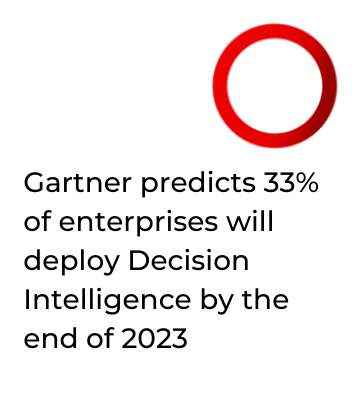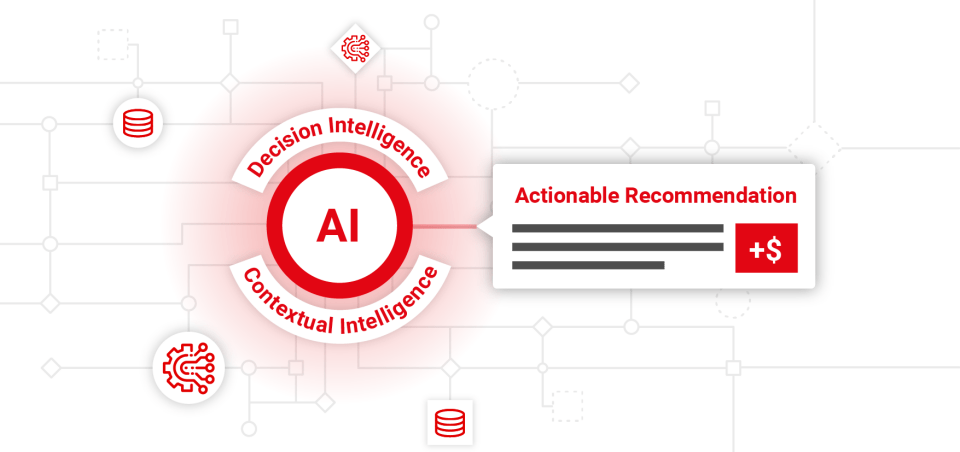The Ultimate Decision Intelligence Guide
Our Ultimate Decision Intelligence Guide defines what decision intelligence is, describes the benefits of its use, how it works, and why decision intelligence provides a superior solution for using big data to meet business needs and improve business practices.
Let’s start with what we know.
Don’t Settle for Automated Insights!
Massive Investments in Visualization Tools Emerge.
In the past two decades, enterprises have made massive investments in BI and visualization tools, data lakes, and machine learning platforms to deliver data-driven insights and optimize business outcomes. Despite the tsunami of dashboards being produced, effectively turning dashboards and insights into business value remains elusive. The “last mile of analytics” – the final step in the analytics process in which humans must translate dashboards into outcomes that drive value – is still a challenge for many organizations.
Decision intelligence leverages AI and Contextual Intelligence to create output in the form of specific and actionable recommendations instead of dashboards and reports. This advanced application of AI means that data-driven decisions are efficiently, consistently, and rapidly enabled for suitable use cases. Rather than searching for insights, business users evaluate a DI-driven recommendation and make decisions with high accuracy, frequency, and absence of human bias.

What is Decision Intelligence?
Don’t Settle for Automated Insights!
What it does and what is doesn't do.
Decision Intelligence combines various decision-making techniques with AI, ML, contextual intelligence, and automation to generate actionable and specific business recommendations that can be immediately acted upon to create business value - in turn, solving the last mile of analytics challenge. DI helps scale an organization’s ability to utilize massive amounts of data for insight, gain additional context around business decisions and review the impacts decisions will have across the organization. Decision Intelligence does not replace humans in the decision-making process but augments their ability to make better and more consistent decisions. As DI becomes a core part of business processes, decisions get made faster, more easily and less expensively than before.
Decision intelligence includes a feedback loop (also known as closed-loop learning) the process of leveraging the output of an AI system and corresponding end-user actions in order to retrain and improve the system over time. The AI-generated output (predictions or recommendations) is compared against the final decision (for example, to perform work or not) and provides feedback to the system, allowing it to learn and improve itself over time.
Get the most out of your Decision Intelligence Investment Guide
Organizations across industries are leveraging decision intelligence to gain agility and faster, more accurate decision-making. Companies that embrace decision intelligence technology position themselves better for success than those that don’t. Here are six things to consider to get the most out of your decision intelligence investment.
